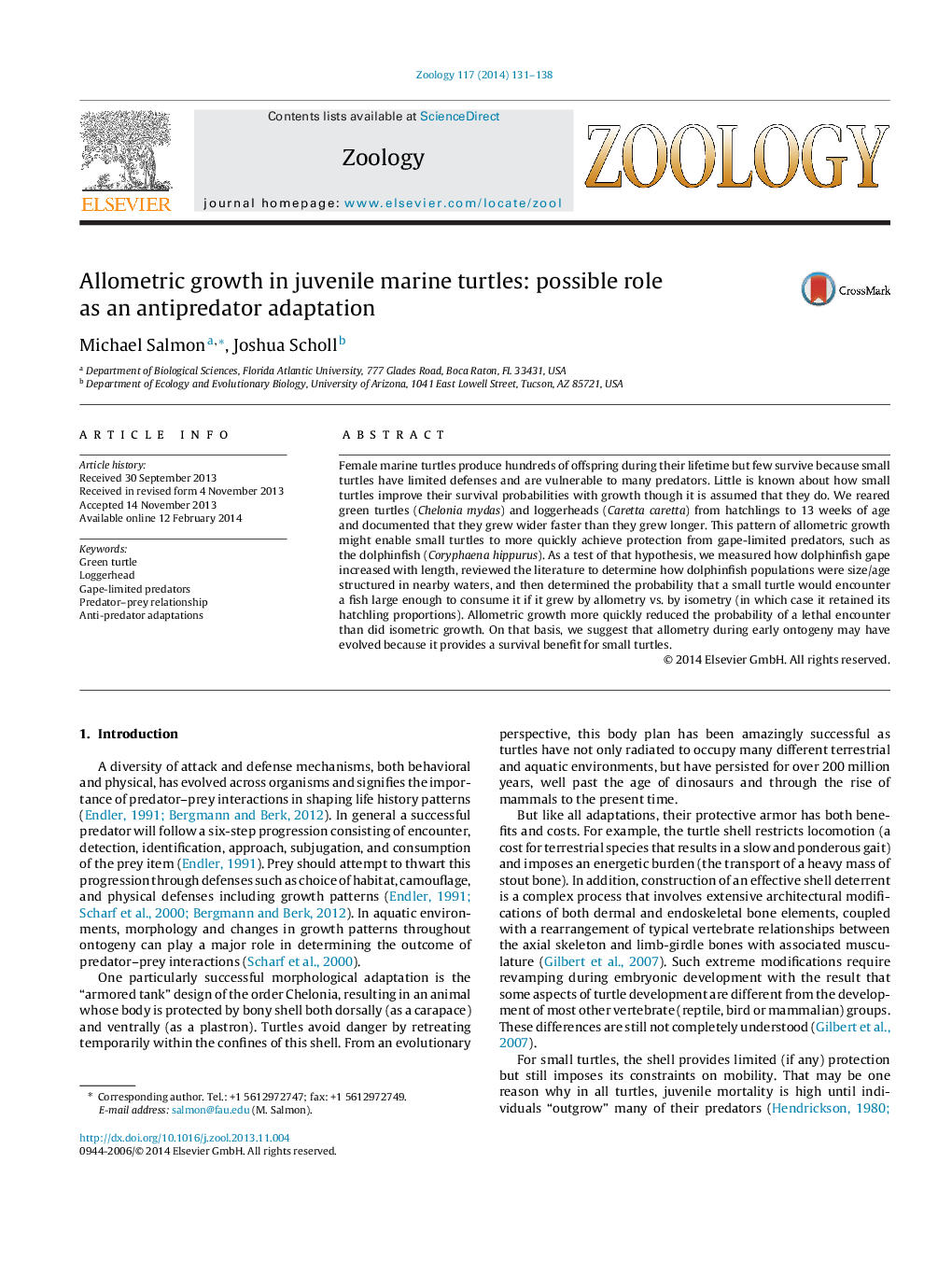| Article ID | Journal | Published Year | Pages | File Type |
|---|---|---|---|---|
| 5896412 | Zoology | 2014 | 8 Pages |
Female marine turtles produce hundreds of offspring during their lifetime but few survive because small turtles have limited defenses and are vulnerable to many predators. Little is known about how small turtles improve their survival probabilities with growth though it is assumed that they do. We reared green turtles (Chelonia mydas) and loggerheads (Caretta caretta) from hatchlings to 13 weeks of age and documented that they grew wider faster than they grew longer. This pattern of allometric growth might enable small turtles to more quickly achieve protection from gape-limited predators, such as the dolphinfish (Coryphaena hippurus). As a test of that hypothesis, we measured how dolphinfish gape increased with length, reviewed the literature to determine how dolphinfish populations were size/age structured in nearby waters, and then determined the probability that a small turtle would encounter a fish large enough to consume it if it grew by allometry vs. by isometry (in which case it retained its hatchling proportions). Allometric growth more quickly reduced the probability of a lethal encounter than did isometric growth. On that basis, we suggest that allometry during early ontogeny may have evolved because it provides a survival benefit for small turtles.
